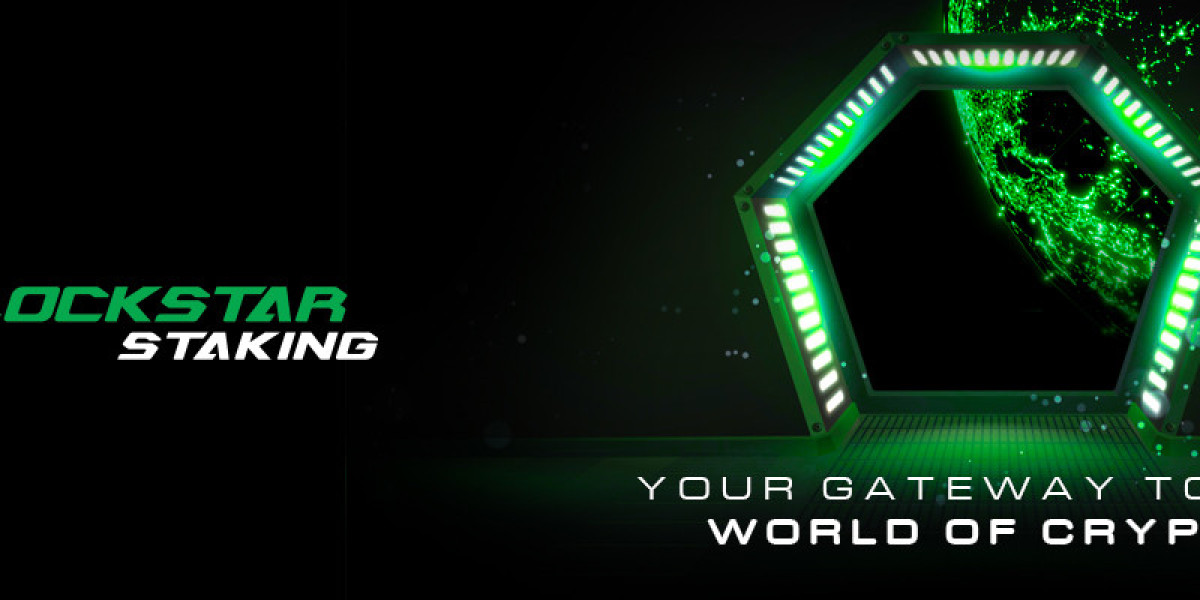In this article, we are going to cover staking strategies and the pros and cons of staking. We will also talk about BlockStar staking, why it’s a good choice, and the security measures in place to keep your investment into crypto safe.
Are you looking for a way to maximize your crypto earnings? Look no further than BlockStar staking. As the world of cryptocurrency continues to grow and evolve, more and more people are looking for ways to maximize their earnings. One popular method for earning passive income is through staking, and BlockStar BST is quickly becoming one of the most popular staking platforms on the market. By staking your BST tokens with BlockStar, you have the potential to earn a high yield while keeping your investment secure.
So, what exactly is staking?
Staking is a term that is commonly used in the world of cryptocurrency that refers to locking up tokens with the expectation of some sort of a return or earnings. The concept of staking is similar to holding money in a savings account and earning interest over time but with notable differences. There are two main functions for staking cryptocurrency: 1) Staking tokens for a period of time (epoch) in a project staking wallet or smart contract.
1) Staking tokens for a period of time (epoch) in a project staking wallet or smart contract.
● Staking tokens in this way promotes investor confidence, provides a potential means for the project to obtain initial liquidity, and affords the ability to reward loyal token holders for standing firm over a period of time, while utility is built and deployed.
2) Staking tokens to validate transactions and secure a blockchain network.
● Staking tokens as part of a consensus model, such as the Proof of Stake (POS) model, is another staking function available to crypto token holders. Ultimately, staking tokens as part of a blockchain protocol is part of a structure setup to achieve a few objectives: maintain a pool of available token pairs for swapping; provide security to the network and ensure decentralization;
use less computing power to validate transactions, thus reducing energy consumption and cost by the network.
● Staking tokens in a consensus model is a more advanced type of staking but it's worthwhile to have a general understanding of the options utilized by many seasoned crypto holders.

Some Considerations Before Staking
There are several details to know about staking before ever committing tokens to a staking contract.
- Investors need to think about the length of time that they are willing to lock up tokens and the rules of the staking contract. Typically, once your tokens are staked and locked into a contract, they are not able to be withdrawn until the epoch time expires. Some chains use a withdrawal period, which means you can withdraw your tokens at any time but must wait until the predetermined time period expires. There are contracts that do allow early withdrawal, but the investor will incur a significant penalty to do so. Do not commit tokens for staking unless you're fully aware of this rule beforehand, because due to immutability (inability to be changed), the rules regarding withdrawal are not able to be changed even if you have a dire emergency.
- Investors need to survey the available staking options that exist for a given token. There might be one platform that offers a better staking APY than another to attract attention and users to their platform. Research needs to be done to understand and ensure that the staking platform being used is reputable and in good standing with its users. The extra APY found on an unknown platform may not be worth the extra risks associated with this unknown staking entity.
- Investors should consider if they want to stake all their tokens from the same wallet. Some investors want to stake tokens from more than one wallet to limit the impact of a wallet becoming unusable or lost. The thinking here is the wallet that an investor stakes from must be the wallet that is used to withdraw the tokens after the epoch time expires and the contract unlocks the tokens. Staking from more than one wallet may be ideal for people that are looking for ways to reduce the risk of losing access to large token holdings due to wallet complications.
- Some people like to employ a stagger strategy to staking. For example, instead of staking all their tokens for 1 year, an investor may decide to stagger 1/3 of their holdings for 60 days, 1/3 of their holdings for 6 months, and stake the last 1/3 of their tokens for a full year. This staggering allows the investor to gain access to their tokens at different times and assess their desires and situation and make decisions based on the outlook of the project. For
instance, it may be necessary to sell a portion of their unlocked tokens after 60 days to take some profits and restake the rest. - Another common strategy is ladder staking which involves staking tokens at regular intervals. For example, an investor's plan may be to purchase tokens every Wednesday and stake them for 60 days. After 60 days, the first batch of tokens staked becomes unlocked and the investor can decide what to do at that point, and every week going forward until all tokens are unlocked. Many people like employing this strategy to have a consistent flow of tokens to make decisions about. This plan is usually considered a good strategy from the project's perspective because it limits the impact of rash decisions made by impatient investors and instead only allows reacting to market conditions over time. Its not uncommon to hear about investors that have tokens unlocking every week of the year! One potential downfall to this strategy can be the costs associated with weekly transaction fees associated with unstaking and restaking.
- One last point to consider is the annual percentage yield (APY) being offered for staking tokens. The BlockStar platform offers some of the best staking rates allowing you to earn more than you would with other staking options. This means you can earn more crypto without having to actively trade or invest in new coins or tokens. BlockStar offers a variety of staking options to suit different needs and preferences. Whether you're looking to stake a small amount or a large amount, there is an option for everyone. BlockStar offers 30, 90, 180 or 365 lock periods, each with a different reward level. The longer you commit (or lock) your tokens in the staking pool, the higher the yield. BlockStar offers an “Emergency Withdraw” option to the staking platform. If a staker decides to withdraw their funds early, they may do so but will incur a 25% penalty.
Pros and Cons of Staking
Staking cryptocurrency is the process of holding them in a wallet for a particular period of time and earning rewards for supporting the network's operations.
Here are some pros and cons of staking crypto:
Pros:
- Potential for earning passive income: Staking allows investors the opportunity for passive income by holding their crypto assets in a staking wallet or contract and contributing to the network's operations. Depending on the network's rules, stakers can earn a percentage of the network fees or inflation as a reward.
- Increased network security: Staking in support of consensus model helps to increase the network's security by incentivizing nodes to support the network's operations. This, in turn, reduces the risk of attacks and makes the network more stable and reliable.
- Long-term investment: Staking may be suitable for those who are looking for a long-term investment in a crypto project they believe in. By staking, investors are showing their commitment to the project and helping to ensure its longevity and success.
- Lower environmental impact: Proof-of-stake (PoS) networks, which are used for staking, consume less energy compared to proof-of-work (PoW) network, which is used for mining. This reduces the environmental impact of cryptocurrency use.
Cons:
- Risk of price fluctuations: Cryptocurrencies are volatile and prone to price fluctuations. The value of staked assets could decrease or increase significantly, depending on market conditions.
- Lockup period: Staking requires holding the cryptocurrency in a wallet for a particular period, which could range from a few days to several months. This prevents investors from selling their assets during the lockup period, which could be an issue if they need liquidity.
- Technological risk: Staking requires technical knowledge and management of a cryptocurrency wallet, which could be a challenge for those who are new to cryptocurrency or not tech-savvy.
- Network risk: Staking requires holding assets in a wallet, which could be a risk if the network suffers a security breach or gets hacked.
BlockStar Security
A key advantage of staking with BlockStar is the security of the platform. The team behind BlockStar takes security very seriously and has implemented multiple layers of protection to ensure that users' funds are safe and secure. BlockStar uses a decentralized architecture, which means that there is no central point of failure. This makes it much more difficult for hackers to gain access to the platform and steal data or assets.
seriously and has implemented multiple layers of protection to ensure that users' funds are safe and secure. BlockStar uses a decentralized architecture, which means that there is no central point of failure. This makes it much more difficult for hackers to gain access to the platform and steal data or assets.
Here are some of the key security measures that are available to investors:
- Encryption: BlockStar uses advanced encryption techniques to protect data in transit and at rest to ensure that sensitive information is secure and cannot be easily intercepted or compromised.
- Multi-factor Authentication (MFA): MFA is a security process that requires users to provide more than one authentication factor to gain access to their accounts, which adds another layer of defense against unauthorized access.
- Access controls: BlockStar maintains strict controls over who can access our systems and applications, ensuring that only authorized personnel can access sensitive data.
- Regular security audits: BlockStar regularly performs security audits and penetration testing to identify vulnerabilities in our system and applications and take proactive steps to address them.
- Consensus mechanism: BlockStar uses a secure consensus mechanism that ensures the validity and accuracy of transactions and blocks added to the blockchain. This makes it extremely difficult for bad actors to tamper with the blockchain, protecting the integrity of the data stored on it.
- DDoS protection: BlockStar has implemented DDoS (Distributed Denial of Service) protection to defend against malicious attempts to overload our network infrastructure, keeping our platform running smoothly for our users. 7.
- Continuous monitoring: BlockStar uses real-time monitoring tools and alerts to track the platform's health, operating status, and user activity, allowing us to identify and quickly respond to potential security risks.
In addition to the attractive staking yields and robust security, staking with BlockStar is a great way to support the BST ecosystem. Since BST is the native token of the BlockStar network, chances are that the demand for BST will only continue to rise placing upward pressure on its chart price as well. By staking BST tokens, investors can get into a position to not only potentially benefit personally, but also help solidify the future of one of the best crypto projects to be released in many years.
In conclusion, BlockStar staking is a great way to earn BST tokens while keeping your investment secure. With competitive rates, a user-friendly interface, and top-notch security measures, it's no wonder why more and more people are turning to BlockStar for their staking needs. So why not give it a look and see the benefits for yourself.









